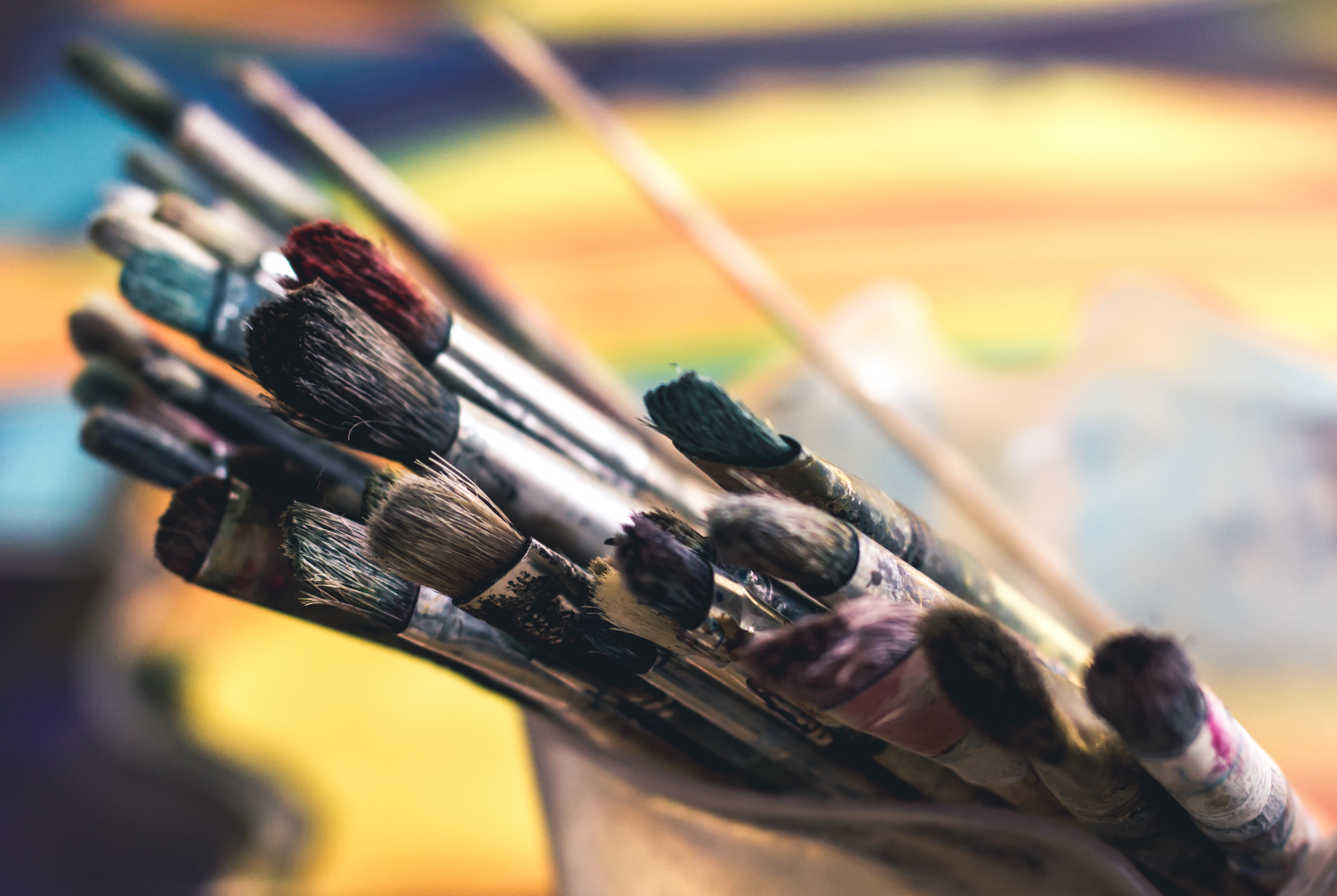5 Important Art Tips, Tricks and Terms for Creative Painters
During every class at our Bricktown studio, painters learn some basic tricks about painting with acrylic paints. “Hold your paintbrush like a pencil when outlining or drawing, so that you have more control over it,” or “Overlap different colored areas while the paint is still wet in order to blend soft transtions.”

1.) “Atmospheric perspective” is a fancy way of saying “Things in the distance appear lighter in color than things closer to us.” This is often most noticeable in landscape paintings where distant mountains or trees might appear pale blue or green. It’s best to exaggerate atmospheric perspective in paintings with a lot of depth to them. This works much better for paintings like landscapes, than still life paintings or portraits.
2.) “Contrast” describes how elements of a painting are different from one another, and most often refers to “Value Contrast” which just means that a painting has both bright highlights, and dark shadows, though one can also have contrast between things like colors and textures. The aesthetic part our brains enjoys things with high amounts of contrast—especially because paintings are often viewed from a few feet away. If a painting lacks value contrast, the similar colors and values tend to blend together into a blur that’s hard to distinguish from a distance. Renaissance artists like Caravaggio, and Impressionists like Claude Monet are examples of famous artists known for their masterful use of contrast to make eye-catching works of art.
3.) A “Vingette” usually references a background that is light at the center, and fades to black at the edges. It’s a way of giving a painting a “border” without actually having a clear, defined line around everything. Artists use vingettes to pull a viewer’s focus to a particular subject. It’s an easy and effective way of encouraging the way that a viewer’s eye travels across the canvas, and it also helps to add that important value contrast to your painting.
4.) “Complimentary Colors” are colors that are on opposite sides of the color-wheel from one another. These pairs (red and green, purple and yellow, blue and orange) look good when used together in the same painting, but they can’t actually be blended into one another without turning into a muddy gray color. This is because each of these pairs is actually made from all three primary colors. If you’ve ever had an artist in one of our classes tell you “These colors don’t get along very well if you mix them!” they were probably referring to two complimentary colors.
5.) Last but not least “Layering” is an important part of nearly every painting. Even simple paintings typically look best if they’re built in layers. This is why some of our paintings at Pinot’s Palette, look a little odd until toward the end of class—when essential layers add detail to the image. Many paintings start off with a basic sketch of simple lines to mark out where shapes will go, and then colors are “blocked” in to create a base coat for the painting. After that, layers are added on top of one another to refine those blocked-in colors and create a more fully-rendered image. This process of layering is important for creating work that looks detailed and finished, and different results can be met depending on whether new layers are added on top of wet paint, or dry paint.
These are all tips and tricks that we use to make our paintings look great in every class. But understanding them more thoroughly makes it easier create your own successful work of art—especially if you want to get creative the next time you visit us in Bricktown.

